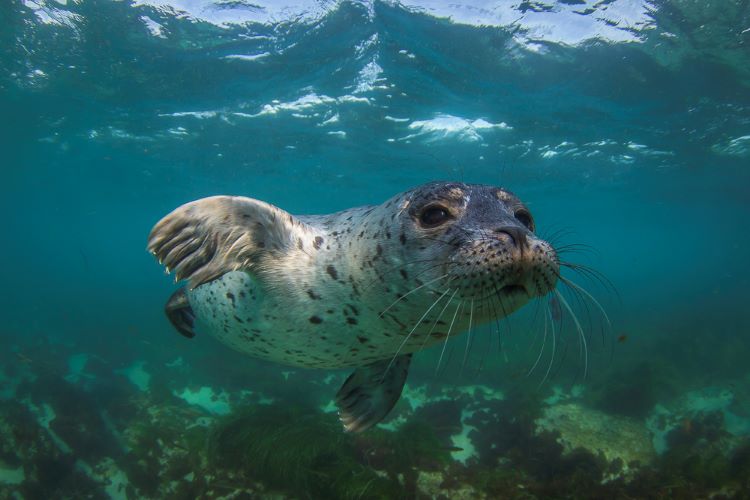
Credit: Jeff Hester / Ocean Image Bank
On behalf of the National Oceanographic Partnership Program, NOAA and partner agencies, including NASA, the Bureau of Ocean Energy Management, and the Office of Naval Research have awarded several new proposals that:
- Build upon the foundation established by the U.S. Marine Biodiversity Observation Network, the U.S. Animal Telemetry Network, and the U.S. IOOS Regional Associations to work across sectors and disciplines towards an integrated, sustained marine life observing capability for the U.S. ocean, coasts and Great Lakes, from estuaries to the deep ocean.
- Advance technologies for efficient and/or automated collection of species and associated habitat observations.
- Enable open access to biodiversity data and information.
- Utilize these observations, technologies, and data to address place-based (e.g., sanctuaries, reserves, protected areas, leasing blocks, etc.) management, conservation and restoration needs.
The Principal Investigators and project titles are as follows:
Francisco Chavez, Monterey Bay Aquarium Research Institute
The CeNCOOS MBON: Marine biodiversity information in support of a healthy Blue Economy in the central California Current
This project will integrate remote sensing products, in situ data and models in support of a healthy Blue Economy in the Central California Current. Targeted users include NOAA California Current Integrated Ecosystem Assessment, National Marine Sanctuary Programs, the Bureau of Ocean Energy Management, and the State of California. The goal is to quantify relationships between climate, the ocean environment (physics, chemistry) and marine food webs (from microbes to fish and top predators), with the aim of providing predictive understanding of marine ecosystem responses to environmental change.
Nathan Furey, University of New Hampshire
Quantifying marine biodiversity through movements and feeding: Assessing coastal marine ecosystem dynamics near estuary mouths
This project will integrate powerful technologies (acoustic telemetry, environmental DNA [eDNA], and acoustics) with traditional fisheries sampling to quantify impacts of changes in local and regional water conditions on individuals, populations, and community structure. The team will study the impacts of forage species and environmental conditions on Atlantic cod and common terns in both New Hampshire and southern Maine (Casco Bay) coastal waters.
Cassandra Glaspie, Louisiana State University
Louisiana Deltaic Estuaries MBON: Sea Level Rise Sentinels
Estuarine ecosystems are highly productive and diverse environments that provide essential ecosystem function and services. This project will establish a new Marine Biodiversity Observing Network effort in coastal Louisiana, focusing on highly productive and diverse estuarine ecosystems as sea level rise sentinels.
Katrin Iken, University of Alaska Fairbanks
AMBON (Arctic MBON) – linking biodiversity observations in the Arctic
The Arctic Marine Biodiversity Observing Network is designed to provide high-quality biodiversity data from the Arctic Chukchi Sea across trophic levels, from microbes to whales. This project will continue efforts to collect biodiversity data across trophic levels and in relation to environmental conditions; to use biodiversity data to detect changes in species composition, including invasive species; and determine effective in situ observing designs through modeling.
Frank Muller-Karger, University of South Florida
The Southeast US Marine Biodiversity Observation Network (MBON): Toward Operational Marine Life Data for Conservation and Sustainability
This project will serve as a regional collaboration hub of U.S. IOOS to address needs for marine biodiversity information in the Gulf of Mexico and Southeast U.S. EEZ. The effort focuses on the needs of resource managers of the Florida Keys National Marine Sanctuary and other federal and state jurisdictions spanning Biscayne Bay, the Florida Keys, the West Florida Shelf, and deep corals.
 Official websites use .gov
A .gov website belongs to an official government organization in the United States.
Official websites use .gov
A .gov website belongs to an official government organization in the United States.
 Secure .gov websites use HTTPS
A lock or https:// means you’ve safely connected to the .gov website. Share sensitive information only on official, secure websites.
Secure .gov websites use HTTPS
A lock or https:// means you’ve safely connected to the .gov website. Share sensitive information only on official, secure websites.
